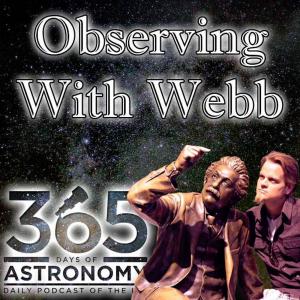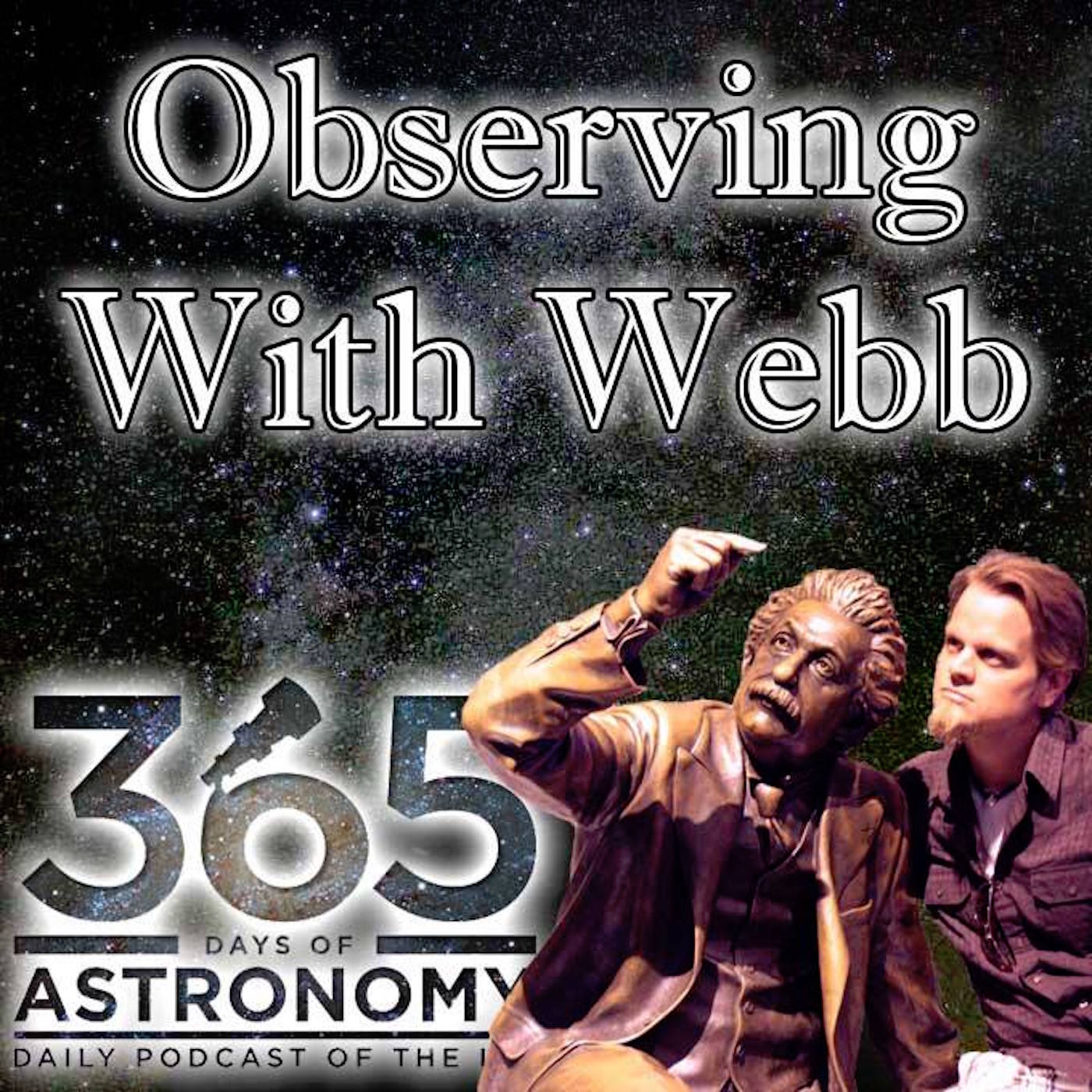Episodes

Wednesday May 04, 2022
May 2022
Wednesday May 04, 2022
Wednesday May 04, 2022
WATCH this on YouTube
LISTEN as a podcast on Podbean, Stitcher, or iTunes
Social Media: @mrwebbpv on Twitter and Instagram
@pvplanetarium on Facebook, Twitter, and Instagram
Lunar Eclipse Month!!! Get ready for a May that boasts a wonderful blood moon and an array of morning planets all month long.
Welcome to Observing With Webb, where a high school astronomy teacher tells you what you’re looking at, why it’s so cool, and what you should check out later this month…at night.
Naked-eye PLANETS
Sunset – Mercury (first week of May)
- Mercury (WNW) – It sounds like this apparition of Mercury will be the best one of the year. Just get out after sunset, look WNW, and the first point of light you’ll see is Mercury. BONUS: On the 2nd, Mercury will be right next to the Pleiades, with the Moon. Get out some binoculars or a low-power scope to see both of them in the same view.
Throughout the night – None
Morning – Venus, Mars, Jupiter, Saturn (SE)
Let’s use Venus as our guidepost for the month, as it is the most visible object in the morning sky.
- Venus (E) – Keep an eye out after 4:30am, looking E, for the highlight of the spring and summer mornings this year, Venus. About 15˚ above the horizon and hard to miss, the brightest object in the morning sky will blaze as a “morning star”.
- Jupiter (ESE) – Jupiter starts May less than 1˚ away from much brighter Venus, then travels 30˚ rightward to finish the month right next to Mars in the SE
- Mars (ESE) – Mars starts May about 15˚ away from Venus, to the right, and travels away to 30˚ from Venus by the end of the month, with Jupiter joining it.
- Saturn (SE) – Saturn starts cautiously leaving the group of morning planets in May, starting less than 20˚ to the right of Mars, and ending up double that distance away.
EVENTS
Evening Crescents (look West after Sunset)
First Quarter Moon – 8th (Visible until midnight)
Evening Gibbous (Mostly lit, after Sunset)
Full Moon – 17th (Visible all night)
Waning Gibbous (Mostly lit, rises later at night)
Last Quarter Moon – 22nd (Visible from midnight into the morning)
Morning Crescents (look East in the AM)
New Moon – 30th (darkest skies)
1st – CONJUNCTION – Jupiter, Venus – Less than 1˚ apart, Jupiter and Venus rise together this morning. Get out and look low in the East after 4:30am (when they rise) for the brightest object, Venus, with Jupiter barely up and to the right.
2nd – Close Encounter – Mercury, Pleiades, Moon – Get out just after sunset, with a nice view of the NWN horizon. The first light in the sky will be Mercury, in its crescent phase, with the Pleiades about 2˚ down and to the right. Get your binoculars and scopes out! The Moon can also be your guide, being 4˚ up and to the left of Mercury.
15th – 16th – TOTAL LUNAR ECLIPSE – Sunday night into Monday morning
Watch the Moon pass through the Earth’s shadow and witness the light from all the sunrises and sunsets on Earth at the same time! No telescope needed for this event! (Though it will certainly make the event even cooler) Make sure you have a view of the Moon. For those of us on the east coast, you’ll be looking South about 25˚ above the horizon. Those nearby trees could get in the way. Try going out the night before from 10pm to midnight. The moon will be in a similar direction, but about 5˚ higher on the 14th.
- Partial Phases starts: 10:28pm EDT – This is when the dark umbra of the Earth’s shadow will start to “eat away” at the Moon.
- Totality Starts – 85 minutes – 11:29pm EDT – This is when the Moon is FULLY in the umbra of the Earth’s shadow. Only the light that has passed through the Earth’s atmosphere and bent toward the Moon is visible. The atmosphere scatters the blue, violet, green, and yellow, leaving only the orange and red to reach the moon, similar to what you see during a sunrise or sunset. Notice that the top of the Moon will be darkest while the bottom will be lightest.
- Greatest eclipse 12:12am – This is when the Moon is as deep in the Earth’s shadow as possible for this eclipse. Not quite dead center, but about halfway there.
- Totality Ends – 12:54am EDT on the 16th – The Moon leaves the umbra of the Earth’s shadow and is back to be a partial lunar eclipse until…
- Partial phase ends: 1:56am EDT – Eclipse is over! (Technically, it’s in the penumbra of the Earth’s shadow for about another hour, but that’s really hard to detect with the naked eye.
21st - 27th – Close Encounter – Moon, Jupiter, Mars, Venus, Saturn – The Moon joins the sunrise planet party this week! To set the scene, each morning get out between 4:30am and 5am, and you’ll be able to see Venus, with Jupiter to the right about 15˚, Mars to the right of that 5˚, and Saturn about 30˚ even further to the right of Mars. From left to right, that’s Venus, Jupiter, Mars, Saturn. What happens over the next week or so is the Moon travels through the lineup. The Moon is about 15˚ to the right of Saturn on Saturday the 21st, but moves to about 5˚ below Saturn on Sunday the 22nd. Monday morning it’s between Saturn and Mars, and makes a nice triangle with Mars and Jupiter on Tuesday the 24th. On the 25th, The Moon lines up perfectly with a line connecting Mars and Jupiter. Thursday the 26th, you’ll have a beautiful crescent Moon less than 10˚ to the right of Venus, and the next morning it switches over to the other side of Venus.
29th – 30th – CONJUNCTION – Jupiter, Mars – Just like early in the month, but this time with Mars, Jupiter is less than 1˚ away from a fellow planet of in the ESE. This time, though, you can start seeing them after 3am.
CONSTELLATIONS
Use a sky map from www.skymaps.com to help you out.
After Dinner, Before Bed:
Leo, Big Dipper, Bootes – Leo will be high in the South, almost straight above you. It has a backward question mark with a right triangle to the left of the question. If you look above Leo, behind you and high in the sky, you should find the Big Dipper: seven very bright stars that form a spoon shape. Now if you take the handle of the Dipper, follow its curve to the next bright star you see, about 30˚ away, which is Arcturus. “Follow the arc to Arcturus.” That’s the brightest star in Bootes, which looks like a kite. Take that same curve, and follow it about another 20˚ to “speed on to Spica”, the brightest star in Virgo, one of my favorite constellations, since it reminds me of the Dickinson Mermaid.
Before Work:
Lyra, Hercules, Hercules Cluster – Look pretty much straight above you, and find the brightest star up there. You’ll notice a parallelogram attached to it. This is the brightest star Vega, part of the constellation Lyra, the harp. Next to that is a keystone shaped constellation called Hercules. On the right side of the keystone is a small cluster of stars known at the Hercules Cluster, which is a collection of hundreds of stars on the outskirts of our galaxy. Given how high it is in the sky right now, you might catch its faint fuzziness with your naked eye, but a set of binoculars or a small telescope will really help you see it.
Don’t forget this podcast is found on my Podbean page, Stitcher, and iTunes. There’s also a video version on my YouTube Channel and I can be found on Twitter and Instagram as @mrwebbpv. The Pequea Valley Planetarium and its events and updates are on Facebook, Twitter, and Instagram as @pvplanetarium.


No comments yet. Be the first to say something!